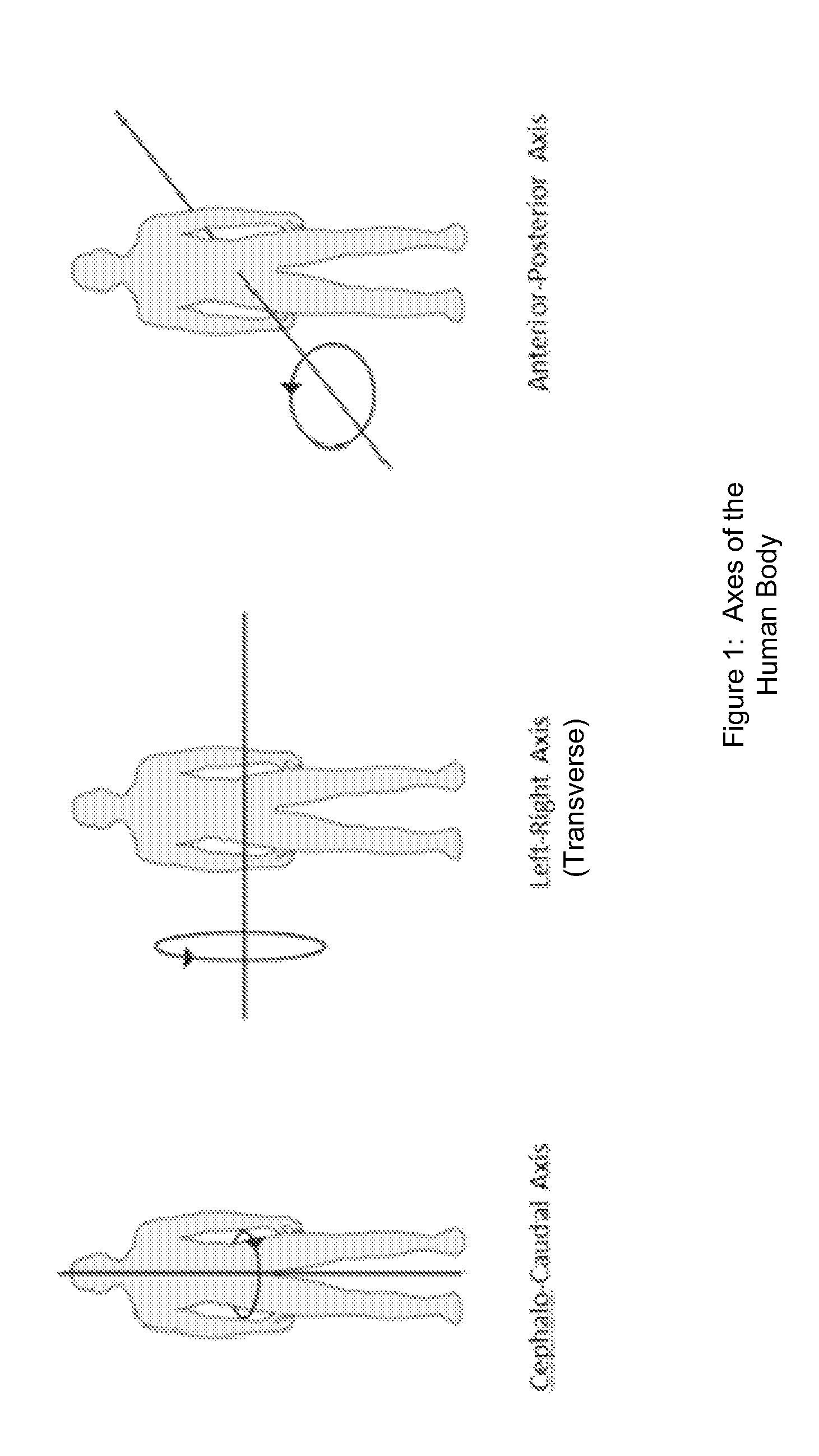System and method for analyzing patient orientation, location and movement
a patient orientation and location technology, applied in the field of patient monitoring systems and methods, can solve the problems of limited mobility, significant health risks for individuals, and exiting the bed and falling, and cannot be constantly monitored visually
- Summary
- Abstract
- Description
- Claims
- Application Information
AI Technical Summary
Benefits of technology
Problems solved by technology
Method used
Image
Examples
Embodiment Construction
[0016]Location-Based Orientation Sensing
[0017]Referring first to FIG. 1, the various axes of motion for the human body are illustrated for reference purposes herein. The cephalo-caudal axis characterizes rotation around a line extending through the center of the body from the head to the feet. The transverse axis is parallel to the ground for a standing patient and divides the body into relatively cephalo and relatively caudal portions. The anterior-posterior axis extends from the back to the front of an individual and is parallel to the ground for a standing patient. Each of these axes can be used to measure one component of the patient's orientation.
[0018]The method and apparatus of the present invention can be used to measure the location, 3-dimensional orientation, and movements of a user. This information can be used to provide an indication of a patient's location, orientation, cardiorespiratory parameters (such as heart and breathing rate), neurologic status (such as seizures...
PUM
 Login to View More
Login to View More Abstract
Description
Claims
Application Information
 Login to View More
Login to View More - R&D
- Intellectual Property
- Life Sciences
- Materials
- Tech Scout
- Unparalleled Data Quality
- Higher Quality Content
- 60% Fewer Hallucinations
Browse by: Latest US Patents, China's latest patents, Technical Efficacy Thesaurus, Application Domain, Technology Topic, Popular Technical Reports.
© 2025 PatSnap. All rights reserved.Legal|Privacy policy|Modern Slavery Act Transparency Statement|Sitemap|About US| Contact US: help@patsnap.com



